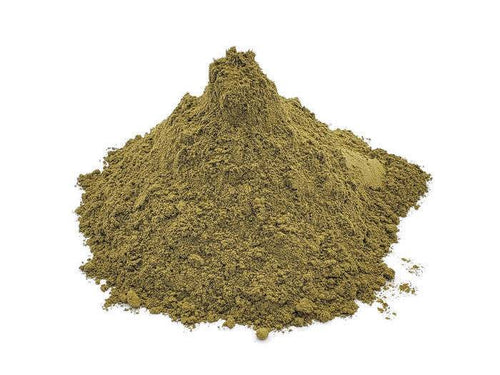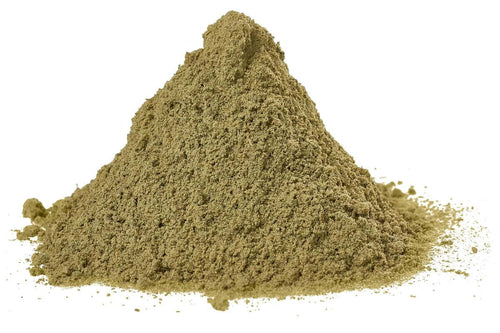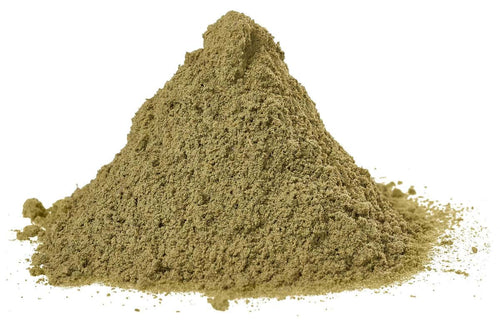Key Takeaways
- Temperature fluctuations can significantly impact kratom alkaloid profiles in bulk storage
- Humidity control is crucial for preventing mold growth in stored bulk kratom
- Proper packaging solutions can mitigate climate-related degradation of kratom
- Seasonal harvesting practices influence kratom quality and sustainability
- Climate change presents both challenges and opportunities for kratom cultivation
Introduction to Kratom and Climate Sensitivity
Kratom (Mitragyna speciosa) is a tropical evergreen tree native to Southeast Asia that has gained significant attention worldwide. As a plant that evolved in specific climate conditions, kratom is particularly sensitive to environmental factors. At Mitra Science, we understand that climate plays a crucial role in both the cultivation and storage of bulk kratom.
The relationship between kratom and climate is complex and multifaceted. From the growing conditions in its native regions to the storage environments in distribution facilities, climate factors influence every aspect of kratom's journey from tree to final product. The tropical origins of kratom have shaped its biological requirements, making it especially responsive to temperature, humidity, and seasonal variations that can affect its biochemical composition and overall quality.
Understanding how bulk kratom reacts to climate changes is essential for suppliers, distributors, and consumers alike. This knowledge ensures the maintenance of product quality, proper storage practices, and sustainable cultivation methods. Our bulk kratom wholesale operations are built on this foundation of understanding the plant's relationship with its environment. By recognizing the intricate ways in which climate affects kratom at every stage of production, we can implement strategies to preserve its natural properties and maintain consistency across our product lines despite environmental variations.
Temperature Effects on Bulk Kratom Storage
Temperature is perhaps the most critical climate factor affecting stored bulk kratom. Fluctuations in temperature can trigger chemical changes within the plant material, potentially altering its alkaloid profile over time. These biochemical transformations can affect not only the potency but also the specific characteristics that distinguish different kratom varieties from one another.
Optimal Temperature Ranges
Research indicates that bulk kratom maintains optimal stability when stored between 65-75°F (18-24°C). This temperature range minimizes degradation of the plant's natural compounds while preventing conditions conducive to microbial growth. Scientific studies have shown that maintaining consistent temperatures within this moderate range helps preserve the delicate balance of over 40 alkaloids present in kratom leaves, including the primary compounds mitragynine and 7-hydroxymitragynine that contribute to its unique properties.
At Mitra Science's powdered leaves collection, we carefully monitor storage temperatures to ensure our products like Red Maeng Da and Green Maeng Da maintain their natural properties. These products are harvested from alkaloid-rich leaves when they're at peak ripeness, and proper temperature control helps preserve these qualities. Our climate-controlled storage facilities employ advanced monitoring systems that maintain consistent temperatures throughout the year, regardless of external weather conditions, to protect the molecular integrity of these premium kratom varieties.
Temperature Fluctuation Challenges
Rapid temperature changes pose significant challenges for bulk kratom storage. When kratom is exposed to alternating hot and cold conditions, condensation can form within packaging, creating moisture that accelerates degradation. These temperature swings can be particularly damaging during transportation and warehousing phases, where environmental controls may be inconsistent. The resulting moisture migration within bulk containers can create microclimates that lead to uneven product quality and potential hotspots for contamination.
Our Yellow Maeng Da and White Bali kratom products are particularly sensitive to temperature fluctuations. These premium varieties, priced at $85 per unit with a minimum order of 10 KGS, require consistent climate conditions to maintain their distinctive characteristics. The specialized drying and curing processes used to create these unique strains result in specific alkaloid profiles that can be compromised by temperature instability, making climate control an essential factor in preserving their quality from production through distribution.
Humidity Impact on Bulk Kratom Quality
Humidity works hand-in-hand with temperature to influence bulk kratom quality during storage. Managing moisture levels is essential for preventing mold growth and preserving the integrity of the plant material. The hygroscopic nature of dried kratom means it readily absorbs moisture from the surrounding environment, making humidity control a critical factor in maintaining product stability and preventing degradation of active compounds.
Ideal Humidity Levels
The consensus among kratom experts is that relative humidity between 35-45% provides the optimal environment for bulk kratom storage. This range is low enough to inhibit microbial growth while preventing the material from becoming too dry and brittle. Maintaining this precise humidity balance requires sophisticated environmental controls, especially in regions with naturally high humidity levels. At this optimal range, kratom powder retains its natural texture and aroma while minimizing the risk of moisture-induced chemical changes that could affect its alkaloid content.
Our Green Borneo Kratom and Red Bali Kratom are stored under carefully controlled humidity conditions. These products, available in bulk with minimum orders of 10 KGS, contain 25 different alkaloids that are sensitive to moisture levels. The unique regional characteristics of these strains, developed in the specific microclimates of their growing regions, require precise humidity management to maintain their distinctive properties. Our storage facilities utilize industrial dehumidification systems and moisture-barrier packaging to ensure these premium products remain at optimal humidity levels throughout their shelf life.
High Humidity Risks
Excessive humidity (above 60%) creates an environment where mold and bacteria can flourish, potentially contaminating bulk kratom supplies. This risk is particularly pronounced in tropical and subtropical regions where ambient humidity regularly exceeds optimal levels. Beyond microbial concerns, high humidity can also accelerate enzymatic processes within the plant material that break down alkaloids and other beneficial compounds, effectively diminishing potency and altering the characteristic properties of different kratom varieties.
Low Humidity (<35%)
Kratom becomes brittle and loses aromatics. The dry conditions cause leaves to crack and lose their natural properties.
Optimal Humidity (35-45%)
Maintains product integrity and stability. This range provides the perfect balance for preserving kratom's natural characteristics.
High Humidity (>60%)
Risk of mold, bacteria, and accelerated degradation. Excess moisture creates an environment where harmful organisms can grow.
Proper storage techniques are essential for maintaining the quality of bulk kratom in varying humidity conditions. Our blog provides comprehensive guidance on best practices for preserving kratom's natural properties in different environments. These techniques include the strategic use of desiccant packets, sealed containers with appropriate moisture barriers, and regular rotation of stock to minimize extended exposure to potentially damaging humidity conditions. Implementing these practices is particularly important for businesses and consumers in regions with seasonal humidity fluctuations that can affect kratom quality over time.
Seasonal Variations and Harvesting Practices
The timing of kratom harvests relative to seasonal climate patterns significantly influences the characteristics of the final product. Understanding these seasonal variations is crucial for both cultivators and bulk buyers. The monsoon cycles, dry periods, and transitional seasons in Southeast Asia create distinct growing conditions throughout the year that directly impact leaf maturation, alkaloid development, and overall plant vigor in ways that can be detected in the finished kratom products.
Wet vs. Dry Season Harvesting
In Southeast Asia, kratom harvested during the wet season typically produces leaves with different characteristics compared to dry season harvests. These seasonal differences can affect the appearance, texture, and composition of bulk kratom products. Wet season harvests often yield larger, more robust leaves with potentially different alkaloid ratios due to the abundant water availability and reduced solar intensity. In contrast, dry season harvests may produce smaller but more concentrated leaves as the plant diverts resources to protect itself from water stress, potentially resulting in higher alkaloid concentrations as a natural defense mechanism.
At Mitra Science, we work closely with indigenous communities to implement sustainable harvesting practices that account for seasonal variations. Our kratom seeds collection supports cultivation efforts that respect natural growing cycles and environmental conditions. By partnering with traditional farmers who possess generations of knowledge about optimal harvest timing, we ensure our products capture the ideal balance of alkaloids while promoting sustainable agricultural practices that preserve both the quality of kratom and the ecological systems in which it grows.
Climate-Adaptive Harvesting Strategies
Experienced kratom farmers have developed harvesting strategies that adapt to climate patterns, optimizing leaf collection based on environmental conditions rather than rigid calendar schedules. These nuanced approaches reflect deep ecological knowledge passed down through generations of cultivation experience. Rather than harvesting on a fixed schedule, skilled farmers observe subtle indicators in the plants themselves—leaf coloration, vein development, and leaf texture—to determine optimal harvest times that may shift with changing weather patterns and microclimatic conditions within growing regions.
Our Red Horn Kratom and Green Horn Kratom products, priced at $40 with minimum orders of 10 KGS, benefit from these climate-adaptive harvesting approaches. These specialized varieties are ethically sourced from indigenous tribes who understand the intricate relationship between climate conditions and optimal harvest times. The distinctive "horned" leaf edges that characterize these varieties develop differently depending on seasonal conditions, requiring harvesters to carefully time collection to capture the unique properties that make these strains sought after by experienced kratom enthusiasts.
Climate Change Impacts on Kratom Cultivation
As global climate patterns shift, kratom cultivation faces both challenges and opportunities. Understanding these impacts is essential for the long-term sustainability of the kratom industry. Rising global temperatures, changing precipitation patterns, and increasing frequency of extreme weather events are already affecting traditional kratom growing regions, requiring adaptation strategies at every level of production to maintain consistent supply and quality in the face of environmental uncertainty.
Shifting Growing Regions
Rising temperatures and changing rainfall patterns are gradually altering the regions suitable for optimal kratom cultivation. Areas that were once ideal may become less productive, while new regions may emerge as viable growing locations. This geographical shift presents logistical challenges for established supply chains but also creates opportunities for expanding cultivation into previously unsuitable areas. The complex interplay between temperature, humidity, soil conditions, and elevation means that even small climate changes can significantly impact which areas can support healthy kratom trees with desirable alkaloid profiles.
Our Mitragyna parvifolia seeds represent an important adaptation strategy, as this related species may offer resilience to changing climate conditions. These seeds, available through our seeds collection, come from tall trees found in parts of India that may have different climate tolerances than traditional Mitragyna speciosa. By diversifying the genetic pool of cultivated Mitragyna species, growers can develop more resilient plantations that can withstand the unpredictable climate variations expected in coming decades, ensuring the continued availability of these botanical products despite environmental challenges.
Adaptation Strategies for Growers
Forward-thinking kratom cultivators are implementing various strategies to adapt to climate change, including:
- Diversifying kratom varieties to include more climate-resilient strains
- Implementing improved irrigation systems to manage water availability
- Utilizing shade structures to protect plants from extreme heat
- Adjusting planting schedules to align with shifting seasonal patterns
Climate Adaptation Effectiveness for Kratom Cultivation
Source: MitraScience Research, 2023
Source: MitraScience Research, 2023
Packaging Solutions for Climate Protection
The way bulk kratom is packaged plays a crucial role in protecting it from climate-related degradation. Appropriate packaging can mitigate many of the challenges posed by temperature and humidity fluctuations. Modern packaging technologies have evolved significantly to address the specific needs of botanical products like kratom, with innovations that create protective barriers against environmental factors that could compromise product quality during storage and transportation.
Climate-Resistant Packaging Materials
Modern packaging technologies offer various solutions for protecting bulk kratom from climate factors:
Our blog on eco-friendly packaging solutions explores sustainable options that also provide climate protection for bulk kratom. These innovative packaging approaches balance environmental responsibility with product preservation. From biodegradable materials with effective moisture barriers to recyclable containers with airtight seals, the industry is developing packaging solutions that address both climate protection needs and ecological concerns. These advances represent an important step forward in creating a more sustainable kratom supply chain that maintains product integrity while reducing environmental impact.
Vacuum Sealing and Oxygen Absorbers
Vacuum-sealed packages with oxygen absorbers create a controlled microenvironment that shields kratom from external climate conditions. This packaging method is particularly effective for long-term storage and transportation through varying climate zones. By removing air and actively absorbing residual oxygen, these packaging systems dramatically slow oxidation processes that can degrade alkaloids and other sensitive compounds in kratom. The vacuum environment also prevents moisture migration and condensation issues that typically occur with temperature fluctuations, providing comprehensive protection against multiple climate-related degradation pathways.
Our powdered leaves and extracts collections benefit from advanced packaging technologies that maintain product integrity despite external climate conditions. These protective measures are especially important for preserving the unique properties of our specialized kratom varieties. For our concentrated extract products, which contain higher levels of sensitive alkaloids, we implement multi-layer barrier packaging with oxygen and moisture scavengers to create an optimal preservation environment that maintains potency and stability regardless of external climate conditions during storage and shipping.
Transportation Challenges in Different Climates
Moving bulk kratom through different climate zones presents significant challenges for maintaining product quality. From tropical growing regions to temperate market destinations, each transportation leg requires careful climate management. The global nature of the kratom supply chain means products often traverse multiple climate zones—from the humid tropics where kratom is grown, through various temperature extremes during ocean and land transportation, to final destinations with their own distinct environmental conditions. Each transition creates potential stress points where climate factors could compromise product integrity if not properly managed.
Cold Chain Management
For premium kratom products, implementing cold chain logistics (temperature-controlled supply chains) can preserve quality during transit through extreme climate conditions. This approach is particularly valuable for liquid kratom products, which are more sensitive to temperature fluctuations. Cold chain management involves maintaining consistent temperature ranges throughout the entire transportation process, from initial processing facilities through warehousing, shipping, and final delivery. This unbroken temperature-controlled environment prevents the thermal stress that can trigger degradation of sensitive compounds and ensures products arrive with their full potency and intended characteristics intact.

















